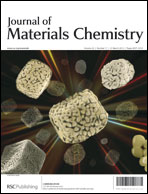This paper describes a novel approach to templated silicification that could directly generate a tubular structure with a polymer@silica hybrid wall. We developed a new process for the crystallization-driven self-assembled formation of a linear polyethyleneimine (LPEI) template on a substrate surface, which involves the key step of alkali-quenching of the complete deprotonation reaction of the adsorbed, protonated LPEI fraction on the substrate at room temperature. This alkali-induced LPEI template allowed the temporally and spatially controlled silicification reaction, leading to the self-generation of a tubular structure with a 3 nm LPEI@silica hybrid wall. The elemental nanotubes were organized hierarchically into two-dimensional mats and the mats were further vertically arrayed into a thin film. Such nanotube-based hybrid films could be formed reproducibly either on glass or on plastic. The surface morphology and nanostructure of the film could be tunable by simply adjusting solution conditions for LPEI self-assembly or by using substrates with controlled surface chemistry. After introducing hydrophobic residues on the film, the hierarchical nanotube surface showed the best repellency toward inkjet ink compared to the nanoribbon- and nanowire-based superhydrophobic surface. We also expanded this templated silicification to synthesize hybrid nanotube powders in solution. Both Brunauer–Emmett–Teller (BET) and transmission electron microscopy (TEM) studies supported direct formation of an approximately 3 nm hollow structure. Thin film X-ray diffraction measurements (XRD), X-ray photoelectron spectroscopy (XPS) and thermogravimetry analysis (TGA) characterizations indicated the hybrid nature of the LPEI@silica wall. This new approach advanced on the conventional methods of using an organic template to direct inorganic materials, and is expected to be generally applicable to directly generate other organic–inorganic hybrid nanostructures.

You have access to this article
 Please wait while we load your content...
Something went wrong. Try again?
Please wait while we load your content...
Something went wrong. Try again?


 Please wait while we load your content...
Please wait while we load your content...